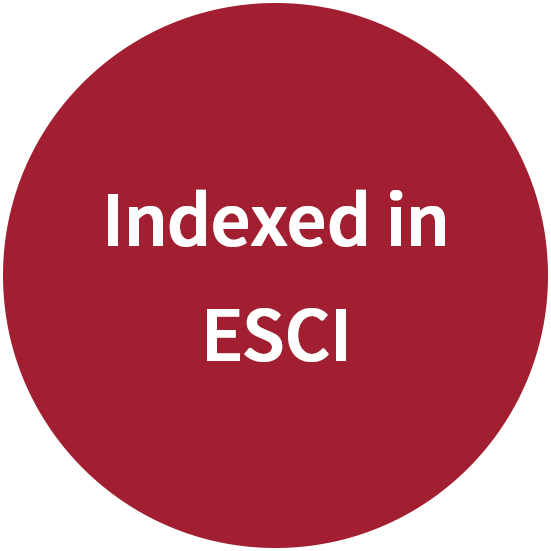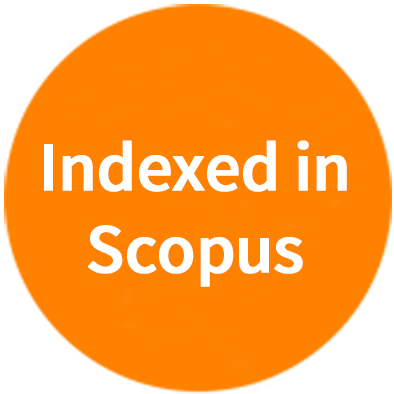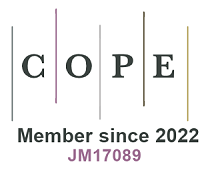REFERENCES
1. Prinz WA, Toulmay A, Balla T. The functional universe of membrane contact sites. Nat Rev Mol Cell Biol. 2020;21:7-24.
3. Ferreira CR, van Karnebeek CD. Inborn errors of metabolism. In: de Vries LS, Glass H, editors. Handbook of Clinical Neurology. Elsevier; 2019;162:pp. 449-81.
4. Saudubray JM, Garcia-Cazorla A. An overview of inborn errors of metabolism affecting the brain: from neurodevelopment to neurodegenerative disorders. Dialogues Clin Neurosci. 2018;20:301-25.
5. Roh J, Subramanian S, Weinreb NJ, Kartha RV. Gaucher disease - more than just a rare lipid storage disease. J Mol Med. 2022;100:499-518.
6. Arévalo NB, Lamaizon CM, Cavieres VA, et al. Neuronopathic Gaucher disease: beyond lysosomal dysfunction. Front Mol Neurosci. 2022;15:934820.
7. Stepien KM, Cufflin N, Donald A, Jones S, Church H, Hargreaves IP. Secondary mitochondrial dysfunction as a cause of neurodegenerative dysfunction in lysosomal storage diseases and an overview of potential therapies. Int J Mol Sci. 2022;23:10573.
8. Farfel-Becker T, Vitner EB, Pressey SN, Eilam R, Cooper JD, Futerman AH. Spatial and temporal correlation between neuron loss and neuroinflammation in a mouse model of neuronopathic Gaucher disease. Hum Mol Genet. 2011;20:1375-86.
9. Osellame LD, Duchen MR. Defective quality control mechanisms and accumulation of damaged mitochondria link Gaucher and Parkinson diseases. Autophagy. 2013;9:1633-5.
10. de la Mata M, Cotán D, Oropesa-Ávila M, et al. Pharmacological chaperones and coenzyme Q10 treatment improves mutant β-glucocerebrosidase activity and mitochondrial function in neuronopathic forms of Gaucher disease. Sci Rep. 2015;5:10903.
11. Xu YH, Xu K, Sun Y, et al. Multiple pathogenic proteins implicated in neuronopathic Gaucher disease mice. Hum Mol Genet. 2014;23:3943-57.
12. Cleeter MW, Chau KY, Gluck C, et al. Glucocerebrosidase inhibition causes mitochondrial dysfunction and free radical damage. Neurochem Int. 2013;62:1-7.
13. Gegg ME, Schapira AH. Mitochondrial dysfunction associated with glucocerebrosidase deficiency. Neurobiol Dis. 2016;90:43-50.
14. Ivanova MM, Changsila E, Iaonou C, Goker-Alpan O. Impaired autophagic and mitochondrial functions are partially restored by ERT in Gaucher and Fabry diseases. PLoS One. 2019;14:e0210617.
15. Ivanova MM, Dao J, Kasaci N, et al. Cellular and biochemical response to chaperone versus substrate reduction therapies in neuropathic Gaucher disease. PLoS One. 2021;16:e0247211.
16. Kaufman RJ. Stress signaling from the lumen of the endoplasmic reticulum: coordination of gene transcriptional and translational controls. Genes Dev. 1999;13:1211-33.
17. Liu EA, Lieberman AP. The intersection of lysosomal and endoplasmic reticulum calcium with autophagy defects in lysosomal diseases. Neurosci Lett. 2019;697:10-6.
18. Hwang J, Qi L. Quality control in the endoplasmic reticulum: crosstalk between ERAD and UPR pathways. Trends Biochem Sci. 2018;43:593-605.
19. Zhang K, Kaufman RJ. From endoplasmic-reticulum stress to the inflammatory response. Nature. 2008;454:455-62.
20. Maor G, Rencus-Lazar S, Filocamo M, Steller H, Segal D, Horowitz M. Unfolded protein response in Gaucher disease: from human to Drosophila. Orphanet J Rare Dis. 2013;8:140.
21. Görlach A, Klappa P, Kietzmann T. The endoplasmic reticulum: folding, calcium homeostasis, signaling, and redox control. Antioxid Redox Signal. 2006;8:1391-418.
22. Sharma N, Rao SP, Kalivendi SV. The deglycase activity of DJ-1 mitigates α-synuclein glycation and aggregation in dopaminergic cells: role of oxidative stress mediated downregulation of DJ-1 in Parkinson’s disease. Free Radic Biol Med. 2019;135:28-37.
23. Lin KJ, Lin KL, Chen SD, et al. The overcrowded crossroads: mitochondria, alpha-synuclein, and the endo-lysosomal system interaction in Parkinson’s disease. Int J Mol Sci. 2019;20:5312.
24. Wong YC, Kim S, Peng W, Krainc D. Regulation and function of mitochondria-lysosome membrane contact sites in cellular homeostasis. Trends Cell Biol. 2019;29:500-13.
25. Belton TB, Leisten ED, Cisneros J, Wong YC. Live cell microscopy of mitochondria-lysosome contact site formation and tethering dynamics. STAR Protoc. 2022;3:101262.
26. Kim S, Wong YC, Gao F, Krainc D. Dysregulation of mitochondria-lysosome contacts by GBA1 dysfunction in dopaminergic neuronal models of Parkinson’s disease. Nat Commun. 2021;12:1807.
27. Schumann A, Schaller K, Belche V, et al. Defective lysosomal storage in Fabry disease modifies mitochondrial structure, metabolism and turnover in renal epithelial cells. J Inherit Metab Dis. 2021;44:1039-50.
28. Huang W, Zhou R, Jiang C, et al. Mitochondrial dysfunction is associated with hypertrophic cardiomyopathy in pompe disease-specific induced pluripotent stem cell-derived cardiomyocytes. Cell Prolif. 2024;57:e13573.
29. Suarez-Guerrero JL, Gómez Higuera PJ, Arias Flórez JS, Contreras-García GA. [Mucopolysaccharidosis: clinical features, diagnosis and management]. Rev Chil Pediatr. 2016;87:295-304.
30. Leal AF, Benincore-Flórez E, Rintz E, et al. Mucopolysaccharidoses: cellular consequences of glycosaminoglycans accumulation and potential targets. Int J Mol Sci. 2022;24:477.
31. Kemp S, Wanders R. Biochemical aspects of X-linked adrenoleukodystrophy. Brain Pathol. 2010;20:831-7.
32. Turk BR, Theda C, Fatemi A, Moser AB. X-linked adrenoleukodystrophy: pathology, pathophysiology, diagnostic testing, newborn screening and therapies. Int J Dev Neurosci. 2020;80:52-72.
33. Moser HW, Mahmood A, Raymond GV. X-linked adrenoleukodystrophy. Nat Clin Pract Neurol. 2007;3:140-51.
34. Berger J, Forss-Petter S, Eichler FS. Pathophysiology of X-linked adrenoleukodystrophy. Biochimie. 2014;98:135-42.
35. Raymond GV, Moser AB, Fatemi A. X-linked adrenoleukodystrophy. In: Adam MP, Feldman J, Mirzaa GM, et al., editors. GeneReviews® [Internet]. Seattle (WA): University of Washington, Seattle; 1993-2025. Available from: https://www.ncbi.nlm.nih.gov/books/NBK1315/. [Last accessed on 26 Feb 2025].
36. Kemp S, Berger J, Aubourg P. X-linked adrenoleukodystrophy: clinical, metabolic, genetic and pathophysiological aspects. Biochim Biophys Acta. 2012;1822:1465-74.
37. Wanders RJA, Baes M, Ribeiro D, Ferdinandusse S, Waterham HR. The physiological functions of human peroxisomes. Physiol Rev. 2023;103:957-1024.
39. Sandalio LM, Rodríguez-serrano M, Romero-puertas MC, del Río LA. Role of peroxisomes as a source of reactive oxygen species (ROS) signaling molecules. In: del Río LA, editor. Peroxisomes and their key role in cellular signaling and metabolism. Dordrecht: Springer Netherlands; 2013. pp. 231-55.
40. Fransen M, Nordgren M, Wang B, Apanasets O. Role of peroxisomes in ROS/RNS-metabolism: implications for human disease. Biochim Biophys Acta. 2012;1822:1363-73.
41. Hulshagen L, Krysko O, Bottelbergs A, et al. Absence of functional peroxisomes from mouse CNS causes dysmyelination and axon degeneration. J Neurosci. 2008;28:4015-27.
42. Krysko O, Hulshagen L, Janssen A, et al. Neocortical and cerebellar developmental abnormalities in conditions of selective elimination of peroxisomes from brain or from liver. J Neurosci Res. 2007;85:58-72.
43. Wiesinger C, Kunze M, Regelsberger G, Forss-Petter S, Berger J. Impaired very long-chain acyl-CoA β-oxidation in human X-linked adrenoleukodystrophy fibroblasts is a direct consequence of ABCD1 transporter dysfunction. J Biol Chem. 2013;288:19269-79.
44. Fourcade S, Ferrer I, Pujol A. Oxidative stress, mitochondrial and proteostasis malfunction in adrenoleukodystrophy: a paradigm for axonal degeneration. Free Radic Biol Med. 2015;88:18-29.
45. Launay N, Ruiz M, Fourcade S, et al. Oxidative stress regulates the ubiquitin-proteasome system and immunoproteasome functioning in a mouse model of X-adrenoleukodystrophy. Brain. 2013;136:891-904.
46. Launay N, Aguado C, Fourcade S, et al. Autophagy induction halts axonal degeneration in a mouse model of X-adrenoleukodystrophy. Acta Neuropathol. 2015;129:399-415.
47. Kruska N, Schönfeld P, Pujol A, Reiser G. Astrocytes and mitochondria from adrenoleukodystrophy protein (ABCD1)-deficient mice reveal that the adrenoleukodystrophy-associated very long-chain fatty acids target several cellular energy-dependent functions. Biochim Biophys Acta. 2015;1852:925-36.
48. López-Erauskin J, Galino J, Ruiz M, et al. Impaired mitochondrial oxidative phosphorylation in the peroxisomal disease X-linked adrenoleukodystrophy. Hum Mol Genet. 2013;22:3296-305.
49. Morató L, Galino J, Ruiz M, et al. Pioglitazone halts axonal degeneration in a mouse model of X-linked adrenoleukodystrophy. Brain. 2013;136:2432-43.
50. López-Erauskin J, Galino J, Bianchi P, et al. Oxidative stress modulates mitochondrial failure and cyclophilin D function in X-linked adrenoleukodystrophy. Brain. 2012;135:3584-98.
51. Wanders RJA, Vaz FM, Waterham HR, Ferdinandusse S. Fatty acid oxidation in peroxisomes: enzymology, metabolic crosstalk with other organelles and peroxisomal disorders. In: Lizard G, editor. Peroxisome biology: experimental models, peroxisomal disorders and neurological diseases. Cham: Springer International Publishing; 2020. pp. 55-70.
52. van de Beek MC, Ofman R, Dijkstra I, et al. Lipid-induced endoplasmic reticulum stress in X-linked adrenoleukodystrophy. Biochim Biophys Acta Mol Basis Dis. 2017;1863:2255-65.
53. Fransen M, Lismont C, Walton P. The peroxisome-mitochondria connection: how and why? Int J Mol Sci. 2017;18:1126.
54. Singh J, Khan M, Singh I. Silencing of Abcd1 and Abcd2 genes sensitizes astrocytes for inflammation: implication for X-adrenoleukodystrophy. J Lipid Res. 2009;50:135-47.
55. Singh I, Pujol A. Pathomechanisms underlying X-adrenoleukodystrophy: a three-hit hypothesis. Brain Pathol. 2010;20:838-44.
56. Court FA, Coleman MP. Mitochondria as a central sensor for axonal degenerative stimuli. Trends Neurosci. 2012;35:364-72.
57. Fourcade S, López-Erauskin J, Ruiz M, Ferrer I, Pujol A. Mitochondrial dysfunction and oxidative damage cooperatively fuel axonal degeneration in X-linked adrenoleukodystrophy. Biochimie. 2014;98:143-9.
58. Fujiki Y, Yagita Y, Matsuzaki T. Peroxisome biogenesis disorders: molecular basis for impaired peroxisomal membrane assembly: in metabolic functions and biogenesis of peroxisomes in health and disease. Biochim Biophys Acta. 2012;1822:1337-42.
59. Salpietro V, Phadke R, Saggar A, et al. Zellweger syndrome and secondary mitochondrial myopathy. Eur J Pediatr. 2015;174:557-63.
60. Lieber DS, Hershman SG, Slate NG, et al. Next generation sequencing with copy number variant detection expands the phenotypic spectrum of HSD17B4-deficiency. BMC Med Genet. 2014;15:30.
61. Jenkinson EM, Rehman AU, Walsh T, et al. University of Washington Center for Mendelian Genomics. Perrault syndrome is caused by recessive mutations in CLPP, encoding a mitochondrial ATP-dependent chambered protease. Am J Hum Genet. 2013;92:605-13.
62. Pierce SB, Chisholm KM, Lynch ED, et al. Mutations in mitochondrial histidyl tRNA synthetase HARS2 cause ovarian dysgenesis and sensorineural hearing loss of Perrault syndrome. Proc Natl Acad Sci U S A. 2011;108:6543-8.
63. Peeters A, Shinde AB, Dirkx R, et al. Mitochondria in peroxisome-deficient hepatocytes exhibit impaired respiration, depleted DNA, and PGC-1α independent proliferation. Biochim Biophys Acta. 2015;1853:285-98.
64. Dirkx R, Vanhorebeek I, Martens K, et al. Absence of peroxisomes in mouse hepatocytes causes mitochondrial and ER abnormalities. Hepatology. 2005;41:868-78.
65. Ong G, Logue SE. Unfolding the interactions between endoplasmic reticulum stress and oxidative stress. Antioxidants. 2023;12:981.
66. Colpman P, Dasgupta A, Archer SL. The role of mitochondrial dynamics and mitotic fission in regulating the cell cycle in cancer and pulmonary arterial hypertension: implications for dynamin-related protein 1 and mitofusin2 in hyperproliferative diseases. Cells. 2023;12:1897.
67. Piamsiri C, Fefelova N, Pamarthi SH, et al. Potential roles of IP3 receptors and calcium in programmed cell death and implications in cardiovascular diseases. Biomolecules. 2024;14:1334.
68. Chen Y, Xia S, Zhang L, et al. Mitochondria-associated endoplasmic reticulum membrane (MAM) is a promising signature to predict prognosis and therapies for hepatocellular carcinoma (HCC). J Clin Med. 2023;12:1830.
69. Alekos NS, Kushwaha P, Kim SP, et al. Mitochondrial β-oxidation of adipose-derived fatty acids by osteoblasts fuels parathyroid hormone-induced bone formation. JCI Insight. 2023:8.
70. Gómez-Virgilio L, Silva-Lucero MD, Flores-Morelos DS, et al. Autophagy: a key regulator of homeostasis and disease: an overview of molecular mechanisms and modulators. Cells. 2022;11:2262.
71. Steck TL, Lange Y. Is reverse cholesterol transport regulated by active cholesterol? J Lipid Res. 2023;64:100385.
72. Wanders RJ, Waterham HR, Ferdinandusse S. Metabolic interplay between peroxisomes and other subcellular organelles including mitochondria and the endoplasmic reticulum. Front Cell Dev Biol. 2015;3:83.
73. Prasad S, Singh S, Menge S, et al. Gut redox and microbiome: charting the roadmap to T-cell regulation. Front Immunol. 2024;15:1387903.
74. Schrader M, Kamoshita M, Islinger M. Organelle interplay-peroxisome interactions in health and disease. J Inherit Metab Dis. 2020;43:71-89.
75. Mielecki J, Gawroński P, Karpiński S. Retrograde signaling: understanding the communication between organelles. Int J Mol Sci. 2020;21:6173.
76. Yapici NB, Gao X, Yan X, et al. Novel dual-organelle-targeting probe (RCPP) for simultaneous measurement of organellar acidity and alkalinity in living cells. ACS Omega. 2021;6:31447-56.
77. Chen FW, Davies JP, Calvo R, et al. Activation of mitochondrial TRAP1 stimulates mitochondria-lysosome crosstalk and correction of lysosomal dysfunction. iScience. 2022;25:104941.
78. Spampanato C, Feeney E, Li L, et al. Transcription factor EB (TFEB) is a new therapeutic target for Pompe disease. EMBO Mol Med. 2013;5:691-706.
79. Gatto F, Rossi B, Tarallo A, et al. AAV-mediated transcription factor EB (TFEB) gene delivery ameliorates muscle pathology and function in the murine model of Pompe disease. Sci Rep. 2017;7:15089.
80. Chaudhuri TK, Paul S. Protein-misfolding diseases and chaperone-based therapeutic approaches. FEBS J. 2006;273:1331-49.
81. Kaur S, Sehrawat A, Mastana SS, et al. Targeting calcium homeostasis and impaired inter-organelle crosstalk as a potential therapeutic approach in Parkinson’s disease. Life Sci. 2023;330:121995.
82. Morató L, Ruiz M, Boada J, et al. Activation of sirtuin 1 as therapy for the peroxisomal disease adrenoleukodystrophy. Cell Death Differ. 2015;22:1742-53.
83. English K, Barton MC. HDAC6: A Key Link between mitochondria and development of peripheral neuropathy. Front Mol Neurosci. 2021;14:684714.
84. Baarine M, Beeson C, Singh A, Singh I. ABCD1 deletion-induced mitochondrial dysfunction is corrected by SAHA: implication for adrenoleukodystrophy. J Neurochem. 2015;133:380-96.
85. Terluk MR, Tieu J, Sahasrabudhe SA, et al. Nervonic acid attenuates accumulation of very long-chain fatty acids and is a potential therapy for adrenoleukodystrophy. Neurotherapeutics. 2022;19:1007-17.
86. Aihaiti M, Shi H, Liu Y, et al. Nervonic acid reduces the cognitive and neurological disturbances induced by combined doses of D-galactose/AlCl3 in mice. Food Sci Nutr. 2023;11:5989-98.
87. Wang X, Liang T, Mao Y, et al. Nervonic acid improves liver inflammation in a mouse model of Parkinson’s disease by inhibiting proinflammatory signaling pathways and regulating metabolic pathways. Phytomedicine. 2023;117:154911.
88. Mantle D, Hargreaves IP. Mitochondrial dysfunction and neurodegenerative disorders: role of nutritional supplementation. Int J Mol Sci. 2022;23:12603.
89. Fourcade S, Goicoechea L, Parameswaran J, et al. High-dose biotin restores redox balance, energy and lipid homeostasis, and axonal health in a model of adrenoleukodystrophy. Brain Pathol. 2020;30:945-63.
90. Casasnovas C, Ruiz M, Schlüter A, et al. Biomarker identification, safety, and efficacy of high-dose antioxidants for adrenomyeloneuropathy: a phase II pilot study. Neurotherapeutics. 2019;16:1167-82.
91. Van Haren KP, Cunanan K, Awani A, et al. A phase 1 study of oral vitamin D3 in boys and young men with X-linked adrenoleukodystrophy. Neurol Genet. 2023;9:e200061.
92. Hernández-Camacho JD, Bernier M, López-Lluch G, Navas P. Coenzyme Q10 supplementation in aging and disease. Front Physiol. 2018;9:44.
93. McGarry A, McDermott M, Kieburtz K, et al. Huntington study group 2CARE investigators and coordinators. A randomized, double-blind, placebo-controlled trial of coenzyme Q10 in huntington disease. Neurology. 2017;88:152-9.
94. Kartha RV, Joers J, Terluk M, et al. Preliminary N-acetylcysteine results for LDN 6722 - Role of oxidative stress and inflammation in Gaucher disease type 1: potential use of antioxidant anti-inflammatory medications. Mol Genet Metab. 2019;126:S82.








